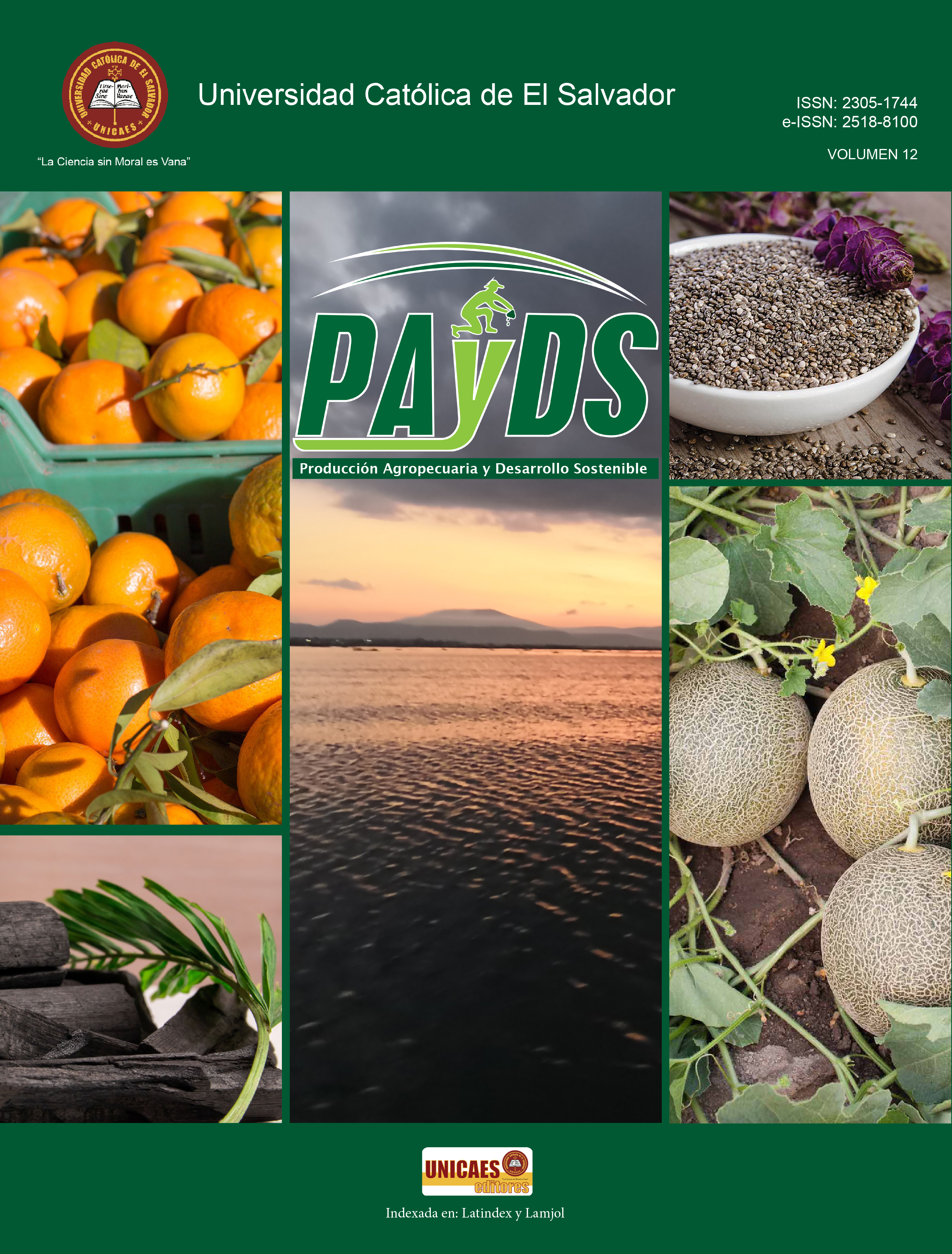Comportamiento del cultivo de naranja Valencia (Citrus x sinensis (L) Osbeck cv. Valencia) en “fincas tipo” en la provincia de Chanchamayo, Junín, selva central del Perú
DOI:
https://doi.org/10.5377/payds.v12i1.17415Palabras clave:
Cítricos, naranja Valencia, rendimiento, calidad, plagasResumen
Este trabajo se realizó con el objetivo de conocer el comportamiento del cultivo de naranja Valencia en “fincas tipo” de la provincia de Chanchamayo, Junín-Perú. El estudio se realizó en Chanchamayo, Región Junín, entre los meses de enero y diciembre del año 2016; para ello se seleccionaron cuatro “fincas tipo” (FT1, FT2, FT3, FT4), con plantas de diez años de edad.
Se le denomina “finca tipo” a la propiedad representativa del grupo de fincas del que fue seleccionado. En cada “finca tipo” se tomaron muestras de suelo, se seleccionaron cincuenta plantas y se evaluaron las características químicas del suelo; incidencia de plagas y enfermedades, calidad del fruto (peso, diámetro y brix) y rendimiento. Para el análisis estadístico, cada “finca tipo” se consideró como un tratamiento, y cada planta como una repetición (cuatro tratamientos con cincuenta repeticiones); y se trabajó como si fuera un Diseño Completamente al Azar.
Los resultados mostraron que el comportamiento de la naranja Valencia fue mejor en la FT2. Esta “finca tipo” tuvo la menor incidencia de plagas y enfermedades; la mejor calidad de fruta y el mayor rendimiento, pero también es la que recibió una mayor inversión.
Descargas
673
Descargas
Publicado
Cómo citar
Número
Sección
Licencia

Esta obra está bajo una licencia internacional Creative Commons Atribución-NoComercial 4.0.
© Producción Agropecuaria y Desarrollo Sostenible
El copyright de los artículos se transfiere a la revista Producción Agropecuaria y Desarrollo Sostenible.
Como usuario de esta revista, usted posee:
● Acceso abierto para consultar la información contenida en este número
● Permiso para copiar, distribuir, mostrar, realizar o combinar las prácticas anteriores, en cuanto al uso de la información, siempre y cuando esta sea estrictamente sin fines de lucro.
Este revista utiliza una licencia CC BY-NC

Este obra está bajo una licencia de Creative Commons Reconocimiento-NoComercial 4.0 Internacional




